Different ways to live in a warm and beautiful house - hide from prying eye radiators and heating pipes.
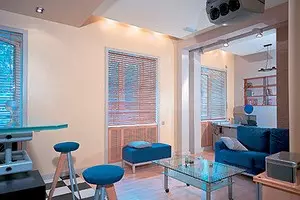
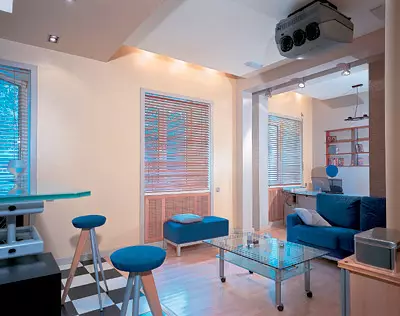
Photo V.Nepledov
Decorative screens are perfectly combined with blinds. But in this case, it is necessary to take into account the compliance of textures and paints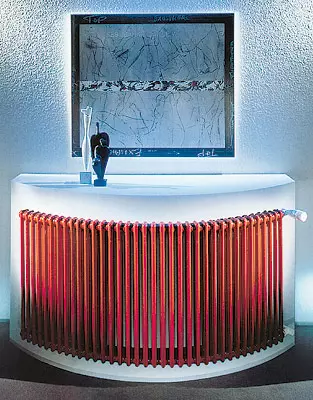
Modern tubular radiator is very decorative, does not require camouflage and almost does not interfere with the implementation of designer's designs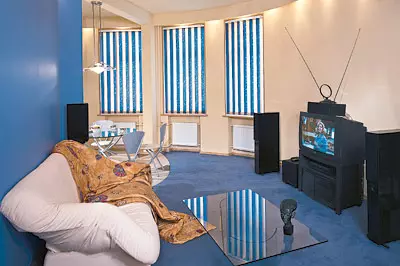
Photo M.Stepanov
If the radiators are placed in a niches under the window, it greatly simplifies the task of the designer. The prefabricated boxes are for nothing, a fairly flat decorative panel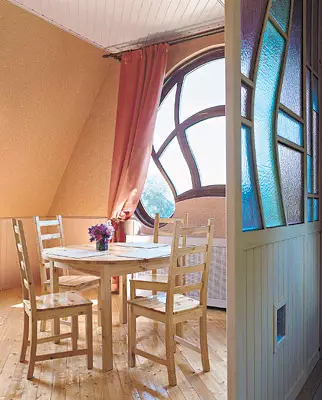
With a challenging window frame configuration, the screen for the radiator does not necessarily do figure. On the contrary, strict geometric forms here are more appropriate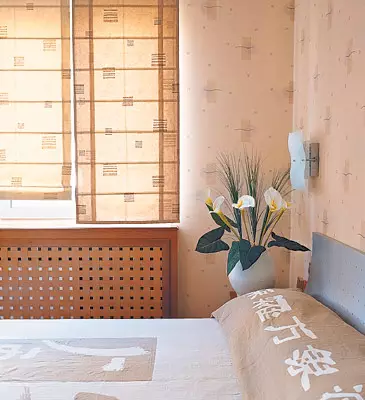
Photo Z.Razutdinova
The combination of a wicker screen and laconic cloth curtains, interesting designer reception, which in this case is justified and emphasized the eastern nature of the interior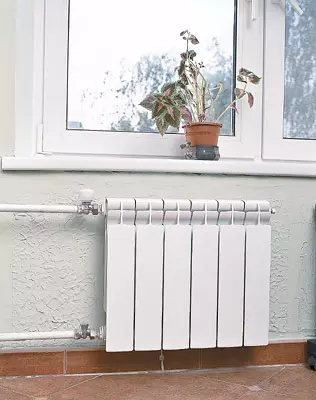
Such a radiator may well do without a screen. It is suitable for an interior in the style of High Tech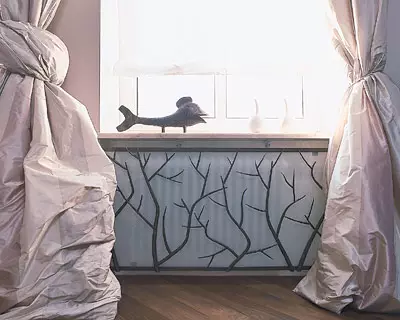
Photo M.Stepanov
Silhouettes of branches turn the utmost screen in the like picture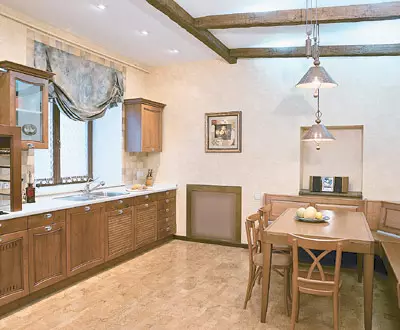
Photo A.reidalova
In the interior of the country, a tree is usually used as the main material, so the decorative screen is better made by wooden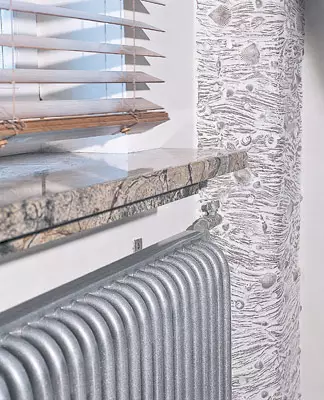
Photo V.Nepledov
Note, in a bright, almost extravagant interior used ordinary lattice screens that do not attract absolutely no attention.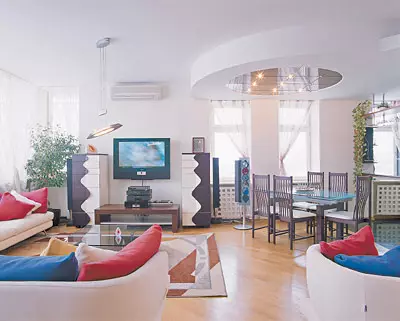
Photo V.Nepledov
Luxurious marble window sill and open pipes radiator is a paradoxical solution, which means that original! By the way, the marble screen can be made to order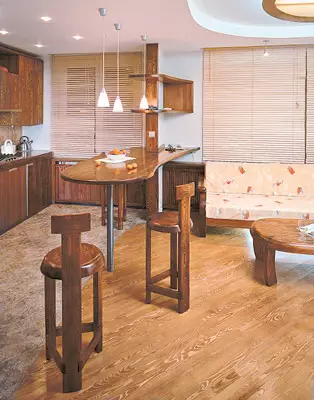
Photo by D.Minkina
In this case, the decorative screen serves as a peculiar continuation of the blinds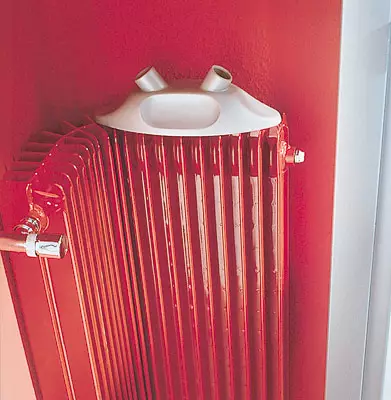
Curved "harmonica" - a variant of the radiator. The screen is not needed here. Similar design sizes do not hide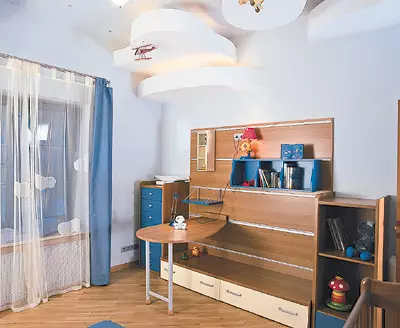
Photo K. Manko
Decorative screen, closed with curtains, is the usual solution, although from a practical point of view it is a clear reinsurance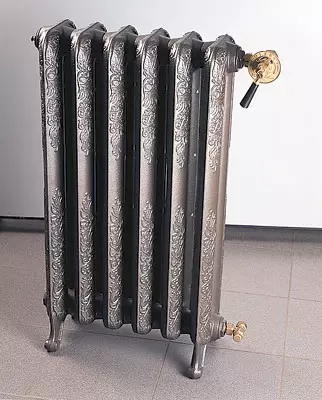
Photo by D.Minkina
Imagine this masterpiece of decorative and applied art- Normal cast iron radiator! Proof of the fact that the boring interior is the problem of people devoid of imagination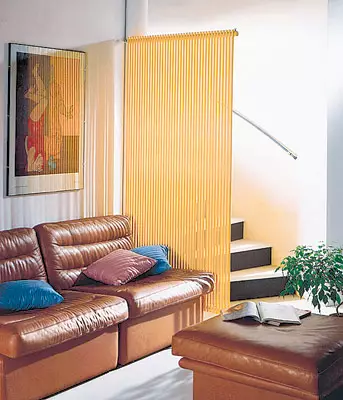
In the traditional, classic style interior there is a place for unexpected designer ideas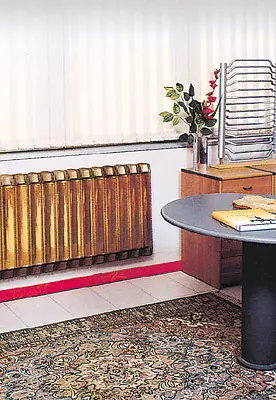
For any indoor plants, dry heat, coming from the battery, is a serious enemy, and the decorative screen rescue. Curtains in such a situation do not provide due protection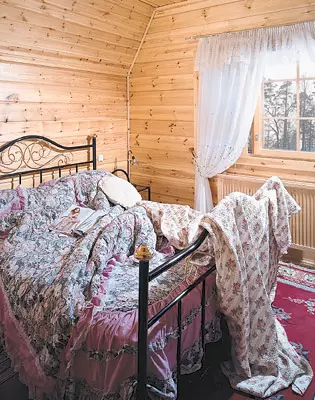
Forging and wood-classic combination. Wooden screen is not at all embarrassed from the overall interior stylist
Neighbors knock on the battery when you arrange holidays?Give them a decorative screen for the radiator!
From useful tips
The heating radiator for a long time was considered the most "nellogenic" element of the interior. It should be recognized that this stereotype has long been outdated. Many modern heating devices do not need disguise, on the contrary, they look so original that they performed the title of "designer". However, there are similar models much more expensive than the usual cast iron "harmonichek". In addition, not everyone agrees that the role of the composite center of the premises played purely functional in its essence. That is why decorative screens for radiators enjoy greatly popular
Pros and cons
There are two ways of opposite opinions regarding the use of decorative screens. Opponents claim that they have no need because the heat transfer of the radiator closed by the screen is reduced by 10-15%.And the heater itself is usually hidden in a niche or is located under the windowsill, behind the curtains (we are talking about typical cases), do additional costs need? Supporters of the "total" decor are observed. Because if you set the goal of creating a truly stylish and thoughtful interior in your home, there should be no extraneous details in it. An open radiator is good, for example, in the room, resolved in the High Tech style (in this case, any "technical" element is welcomed). If we are talking about any other style, no beauty, nor the comfort of a bulky metal design will not add (once again we will remind you that we are not talking about design models, but about prevailing in typical housing of heating batteries).
Another important feature performed by a decorative screen is protective. This is especially important in children's, where the usual sectional radiator sometimes becomes too dangerous toy. A child may accidentally hit his ribbed surface and even get a burn. Screen-grid-reliable protection against such troubles. However, there is an opinion that it is in the children's decorative screen that is not needed because it will "eat" precious heat. And if this is not such a problem for residents of the capital, then in the northern regions the question of decreasing heat transfer is much more acute.
The unconditional supporters of decorative screens include indoor plants. It is well known that the drying heat of the batteries is destroyed for most colors and, by the way, is not useful for our skin ... It seems that the arguments "for" got a lot?
Do with us, do as we ...
Companies naturally do not specialize exclusively at the production of decorative screens. As a rule, their manufacturing and sale are associated, along with the manufacture and sale of other interior elements (doors, windows, stairs, eaves, shirms, etc.). It does not affect the quality of products, it does not affect the client, it is sometimes much more convenient to order a cornice for curtains and a decorative screen immediately to match each other in style.
Often to increase heat transfer on the wall behind the radiator, insulating-reflective materials are applied. For example, according to specialists, fumisol (extruded polyethylene coated with foil) increases heat transfer by 20-25%, that is, it is completely able to compensate for the losses associated with the use of a decorative screen.
Many firms perform products to order (this is especially convenient for private clients who are always encouraged by an individual approach). In order to make an order, you need to provide the manufacturer exact dimensions of your radiator (or radiators), as well as the size of the niche (if the radiator is built into the niche) and select the most suitable styles from the existing samples. If the standard offers will seem too banal to you (the range of similar models does not really amaze a variety), you have the full right to implement any desires. Art forging, marble lattices, the use of precious metals and rare wood breeds - all this is permissible. The only thing that in this case limits the free flight of fantasy is the cost of the finished product. The price of a traditional option (wood, rattan, perforated HDF-canvas) - $ 50-60 at the size of the screen 10060 cm, while the cost of exclusive models will be 5-10 times higher.
A number of companies offer kits whose assembly Customer is able to fulfill independently according to the supplied instructions. Usually fixtures for mounting (bracket corners, arm-hooks, bars, etc.) are not included in the set, but their acquisition, as well as the installation itself is not difficult.
At the specified framework
The traditional decorative screen for the radiator is a frame (often offered a set consisting of individual elements that need to be connected and glued) and the actual lattice screen. No need to explain that the use of "deaf" panels and the more fully closed "boxes" in this case it is impossible: any violation of the circulation of heated air leads to additional heat loss. By the way, about lattices. Their holes can have any shape, the main thing is that they were quite a lot and they themselves have themselves optimal for the passage of heated air into the room. Otherwise, heat through the wall will go outside.If the radiator is located in a niche, quite the above-mentioned design, recorded on the brackets-corners, loops, etc. Sometimes the screen using hook brackets is attached to two side racks, and then it is simply attached to the radiator. It must be remembered that in order to security and maintain the correct heat exchange, a decorative screen in any case is set at a distance of at least 35-40mm from the radiator. From the floor and from the windowsill (if the radiator is located under the windowsill) should remain about 60-70mm.
In the event that the radiator is not placed in a niche, it will have to close it from top to and from the sides. It will be a kind of box that is fixed on the wall or installed on the legs (their height is 60-65mm). Note that the appearance of side elements and the lid affects the cost of the product (for example, a set of two side racks and the lids from MDC costs about 200 rubles.). The price is essentially depends only on the size of the screen itself and the materials from which it is completed. On materials I would like to stop more.
Today on the screen ...
We have already talked about the fact that there are no special limitations regarding the choice of material. It should be remembered only about heat saving and ... environmental safety. We list the options enjoy the greatest popularity.
Plastic. Screens made of plastic mesh are superbly suitable for rooms with high humidity. As a rule, they are intended for radiators installed in niches, so the side elements and plastic covers in this case are practically not applied. Rotan bars (about $ 50 / m2). The advantages of this decorative and finishing material - absolute environmental friendliness, natural beauty, strength and elasticity. If the woven furniture is made from the core of the trunk of the rathana palm tree, then its average fiber part is on the manufacture of the mesh cloth. Weaving is carried out manually, so the pattern of the canvas may be anything, depending on the fancy of the wizard. The surface of the Natural Rotan Rotten Bottles, so, as a rule, it is not stained in the usual way. Most often leave natural color or use a veil to obtain a light or dark brown shade. For those who independently assemble the screen and pulling the rathant, experts give a simple and practical advice: if the canvas seems not well stretched well, it can be poisoned from the reverse side, and after some time, drying out, it will take the proper impeccable look. Artificial "rathang" canvas is made of cellulose, reinforced by the heading thread. Externally, it is practically no different from natural, but it can be painted in any color. The customer's apack often requires a strictly defined color screen, the manufacturers are more likely to use artificial material. Perforated HDF-stove. HDF-wood-fibrous plate of high strength. The cost is comparable to rattan. The price of the canvase will vary depending on the finish, which uses various paints, varnishes, laminate, metal foil and veneer. Moreover, if the laminated coating makes the cloth more expensive for 20-25%, then use, for example, a veneer of African oak increases cost by 150%! HDF, like plastic, is good because it, in painting, can be "issued" for any other material, for example aluminum or wood. Metal grid (about $ 25 / m2). Most often, the screens with a metal grid are used in offices, but also in the home interior such models are quite acceptable.
Hides the shortcomings- emphasizes the dignity
Now let's talk, actually about the problems of the decor. It is not by chance that many companies offer unpainted screens. The fact is that with a standard form (a figured frame can only be done by individual order) the main "sense-sensitive" load is carries color. If your interior is designed in the country style (the direction that becomes fashionable again), then it will be logical next to the wooden and wicker furniture, it will be logical to see a rating fabric or tinted under the tree (in this case, it is better to choose a simulator to tone interior objects). High Tech (the complete opposite of the country) will require metal shades. Therefore, a metal mesh or HDF is suitable for aluminum, silver, etc. Minimalism does not mean any noticeable heating devices (its oriental roots are affected), so it is best to make a decorative screen not different Color from walls.But we will not forget that the modern interior fully admits style liberties, so that any type of screens, including plastic, will be appropriate. Color can be selected in contrast. Sometimes the frame and the lattice are painted differently, which is quite acceptable and even gives the model a special originality. However, if the radiator is under the windowsill, you should not lose sight of the cornice and curtains (more than four "inconsistent" shades nearby the feeling of disharmony).
All these conditional restrictions relate to the living room, bedroom and kitchen, while the children's compatibility is open to implement fantastic designs.
How much is?
We already concerned the cost of finished products, now let's stop on this issue more. You can order or buy a ready-made screen both in the building materials market and in specialized workshops and shops. As noted above, the price is made up of several components, among which the size and material are particularly important. We give several typical examples. For example, Intek offers kits, the total value of which is made up of the value of the components of the elements. Here is one of the possible options: the "classic" screen (1250795mm) from MDF, unpainted - 1204 rubles; Side elements (900285mm) from MDF, unpainted- 264 rubles; Modular upper cover (1290300mm) from MDF, unpainted- 283 rubles.
The assortment of the company "Uyut" has a decorative rattan screen (1000600mm), painted in white, for 1680 rubles.
The editors thanks the company "Intek" and "Comfort" for help in preparing the material.
